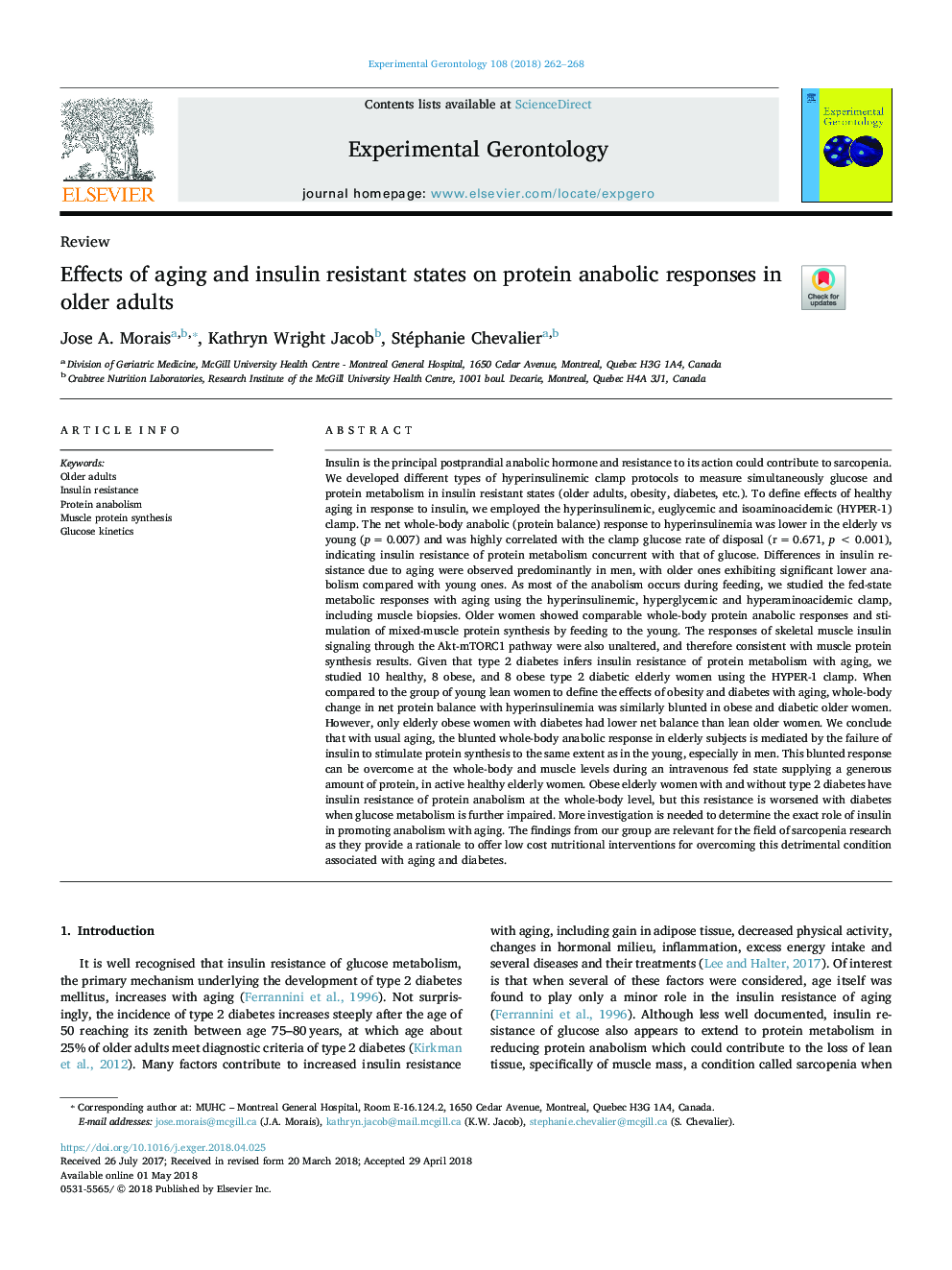| Article ID | Journal | Published Year | Pages | File Type |
|---|---|---|---|---|
| 8262173 | Experimental Gerontology | 2018 | 7 Pages |
Abstract
Insulin is the principal postprandial anabolic hormone and resistance to its action could contribute to sarcopenia. We developed different types of hyperinsulinemic clamp protocols to measure simultaneously glucose and protein metabolism in insulin resistant states (older adults, obesity, diabetes, etc.). To define effects of healthy aging in response to insulin, we employed the hyperinsulinemic, euglycemic and isoaminoacidemic (HYPER-1) clamp. The net whole-body anabolic (protein balance) response to hyperinsulinemia was lower in the elderly vs young (pâ¯=â¯0.007) and was highly correlated with the clamp glucose rate of disposal (râ¯=â¯0.671, pâ¯<â¯0.001), indicating insulin resistance of protein metabolism concurrent with that of glucose. Differences in insulin resistance due to aging were observed predominantly in men, with older ones exhibiting significant lower anabolism compared with young ones. As most of the anabolism occurs during feeding, we studied the fed-state metabolic responses with aging using the hyperinsulinemic, hyperglycemic and hyperaminoacidemic clamp, including muscle biopsies. Older women showed comparable whole-body protein anabolic responses and stimulation of mixed-muscle protein synthesis by feeding to the young. The responses of skeletal muscle insulin signaling through the Akt-mTORC1 pathway were also unaltered, and therefore consistent with muscle protein synthesis results. Given that type 2 diabetes infers insulin resistance of protein metabolism with aging, we studied 10 healthy, 8 obese, and 8 obese type 2 diabetic elderly women using the HYPER-1 clamp. When compared to the group of young lean women to define the effects of obesity and diabetes with aging, whole-body change in net protein balance with hyperinsulinemia was similarly blunted in obese and diabetic older women. However, only elderly obese women with diabetes had lower net balance than lean older women. We conclude that with usual aging, the blunted whole-body anabolic response in elderly subjects is mediated by the failure of insulin to stimulate protein synthesis to the same extent as in the young, especially in men. This blunted response can be overcome at the whole-body and muscle levels during an intravenous fed state supplying a generous amount of protein, in active healthy elderly women. Obese elderly women with and without type 2 diabetes have insulin resistance of protein anabolism at the whole-body level, but this resistance is worsened with diabetes when glucose metabolism is further impaired. More investigation is needed to determine the exact role of insulin in promoting anabolism with aging. The findings from our group are relevant for the field of sarcopenia research as they provide a rationale to offer low cost nutritional interventions for overcoming this detrimental condition associated with aging and diabetes.
Related Topics
Life Sciences
Biochemistry, Genetics and Molecular Biology
Ageing
Authors
Jose A. Morais, Kathryn Wright Jacob, Stéphanie Chevalier,
